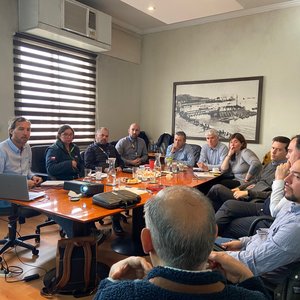The physical properties, especially water stability, of aquatic animal feed are important components of feed quality. Novel feed binders from soybean hulls (SBH) were developed to further improve the water stability of the compound feed.
Researchers at the USDA ARS Aquatic Animal Health Research Unit, Auburn-Alabama evaluated three SBH-based binders as binding agents (2%) against three natural control binders (carboxymethyl cellulose (CMC), corn starch (CS) and wheat gluten (WG)) with respect to water stability and nutrient leaching after being immersed in water up to 48 h at two water temperatures (22°C and 28°C). Pacific white shrimp, Litopenaeus vannamei (mean weight of 6.08 ± 0.04 g), were fed in triplicate aquaria with the experimental diets at a rate of 4% of body weight per day, four times daily, for 6 weeks in a recirculating water system.
Diets with SBH had significantly improved pellet water stability compared to the diets with control binders (CS and WG) after being immersed in water for longer than 12 h. CMC had the poorest water stability at 3 h and longer water immersion. Recovery of pellets with soybean hull binders was significantly higher than the pellets with control binders at 24 h of water immersion. After 48 h of water immersion, only diets with SBH were recovered ranging from 30% to 40%.
Increasing water temperature resulted in a corresponding decrease in the water stability of all pellets. At higher water temperature, however, the water stability of pellets with control binders was significantly lower compared to pellets with SBH.
The binder that best retained crude protein in all time periods was SBH-3. However, it was not significantly different from other soybean hull binders. Percent lipid remained unchanged in all leached pellets up to 12 h of water immersion and increased afterward. Percent ash of the leached pellets increased at 3 h of immersion and continued to increase with the increasing period of water immersion. Diets with SBH retained higher nutrients than the diets containing control binders after being immersed in water for 3 h or longer. Weight gain and survival of shrimp-fed diets with control or SBH for 6 weeks were not significantly influenced by binder type.
Researchers concluded that “the SBH-bound pellets were more water-stable than the control binders and can offer better production and be more affordable and natural alternatives to conventional binders.”
Check out the study here.













